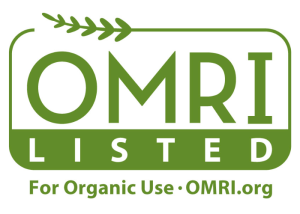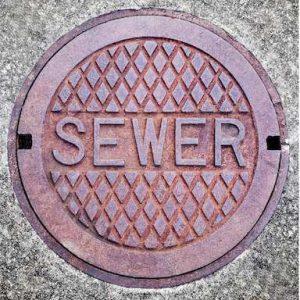The fertilizer market is rather big, and with so many options, you may not know where to start. Avoid being misled and learn about the key things to look for when reading fertilizer labels.
By the Numbers: N-P-K
N-P-K are The Big Three macronutrients listed on fertilizer labels. These numbers correspond to the percentage weight of the bag. We won’t dive too deeply into the chemistry of this, since we love talking about that on our other blogs.
- Nitrogen (N): The primary nutrient for foliar growth.
- Phosphorus (P): A primary nutrient for flowering and rooting. Phosphorus is not necessary for growing turf grass and is often banned due to water quality concerns.
- Potassium (K): The primary nutrient for the overall health of the plant.
Example: A 50 pound bag of PJC ProHealthy Turf 8-0-6 contains 4 pounds “N” and 3 pounds “K”. [50 x .08 =4; 50 X .06 = 3]
Application Rate
A 50-pound bag of 10-0-1 that is slated to cover 15,000 SF is only delivering .33lbsN/1000SF [(50 x .10)/15 = .33]. Remember that these numbers are percentages of weight. So, to get the full 10% “N” or 1lb/1000SF you’d have to apply at 10lbs/1000SF which would cover only 5,000 SF.
While you may think you’re getting bang for your buck by seeking a higher “N” and higher coverage, the math simply doesn’t add up. If you did 3 applications of 10-0-1 at the labeled rate for a 15,000 SF lawn, you’d end up just shy of 1lb N/1000SF for the season. This is 1.5lbs/1000SF less than the minimum requirement for turf type tall fescues and perennial Ryegrass, and 2lbs/1000SF less than the minimum requirement for Kentucky Bluegrass.
DO THE MATH. Make sure you are accounting for the total nutrient input and product cost when determining the best product. Without the proper knowledge and calculations, you could be making a big mistake and overpaying for an inferior product.
Common Product Labels
Organic Materials Review Institute aka “OMRI”.

Be on the lookout for OMRI labels. OMRI is the gold standard for truly organic products. Manufacturers go through a rigorous application for their products to be OMRI approved. This application reviews each ingredient from the source, its manufacturing process, and the final product. OMRI serves as an independent third-party review which ensures product integrity to the US National Organic Program standard. PJC Organic has two OMRI listed products in our catalog (8-0-6 and 6-0-6). The remaining fertilizer blends contain a subset of the materials contained in our 8-0-6 and 6-0-6 blends.
Biosolids
 Biosolids—less commonly marketed as “sewage sludge”—are a product of municipal wastewater filtration processes. Sewage sludge was once revered as a cheap nutrient source alternative to traditional synthetic fertilizers. Therefore, biosolids have been adopted in the agricultural and landscape sector.
Biosolids—less commonly marketed as “sewage sludge”—are a product of municipal wastewater filtration processes. Sewage sludge was once revered as a cheap nutrient source alternative to traditional synthetic fertilizers. Therefore, biosolids have been adopted in the agricultural and landscape sector.
New studies are rather alarming in their discovery of microplastics (PFAs) in biosolids. Microplastics aren’t biodegradable. This could mean that the sterilization process is no longer effective, as harmful toxins could bind to the plastics in the separation process. Additionally, applying products containing PFAs (commonly referred to as “forever chemicals”) don’t break down in the soil and contaminate the water supply. In addition to potential PFAs contamination, just think of the pharmaceuticals many of us take (antibiotics and other classes of drugs). These drugs also end up in the “sludge” and will likely have a negative effect on soil biology. While the consequences of using biosolids are still unknown, we’re going to steer clear of them as they aren’t 100% organic and aren’t the best option available.
Organic-Based
“Organic-Based” is a marketing term that often misleads consumers when they’re reading fertilizer labels. To market a product as organic-based, “it must contain at least 50 percent by weight of organic materials and contain at least 50 percent of all primary nutrients derived from organic materials” (reports.oah.state.nc.us). The other 50% can be synthetic, non-organic material. If you think you are getting an organic service or product when you hear “organic-based”…think again. The goal is to supplement the synthetic compounds with a little bit of organic matter to replace what’s getting depleted by running a fully synthetic program. In reality, a product labeled “organic-based” is a synthetic product—aware of this deceiving marketing tactic.
Poultry Litter
Poultry litter is the term used to describe a combination of chicken (or turkey) manure, urine, bedding, and dropped feathers (not feather meal). These ingredients are dried and processed to be used as a complete fertilizer. While litter does have a decent nutrient profile, it can be an inconsistent product and one that isn’t suitable for growing turf grass due to its phosphorus content. Poultry litter has become favorable in agricultural settings because it is cheap and abundantly available. Similar to biosolids, poultry litter fertilizers were created by dealing with an undesirable byproduct of chicken agriculture, so nearby farmers are able to help pad their necessary nutrient inputs with litter that can be sourced close-by. While it’s not my favorite option—and definitely not something I’d use in turf—I’d consider it for an ornamental garden that needed some nutrients and organic matter.
As you can see, marketing has made reading fertilizer labels difficult and misleading. Keep in mind the N-P-K numbers, application rates, and common product labels listed above. As always, PJC is here to provide the best organic fertilizer products, made with quality and integrity. View our product page, or contact us, for more info on PJC’s organic turf care products.








